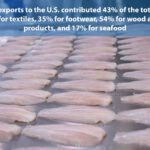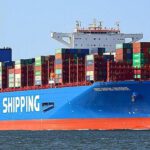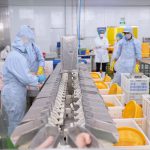Mỗi ngày, 8 tấn da cá tra bị thải bỏ tại Việt Nam và được coi là phế phẩm được bán với giá rẻ mạt. Các nhà khoa học đã phát triển công nghệ tách collagen khỏi phế phẩm để giúp tăng giá trị cho ngành thủy sản.
Theo thống kê, năm 2019, Việt Nam xuất khẩu 1,3 triệu tấn cá tra với giá trị 2 tỷ USD. Tuy nhiên, chỉ có 30% trọng lượng thân cá được sử dụng, trong khi 70% còn lại là đầu, da và xương trở thành phụ phẩm. Trung bình, mỗi nhà máy chế biến cá tra thải ra từ 5 đến 8 tấn da cá và thường bị vứt bỏ, gây ô nhiễm môi trường.
Tuy nhiên, da cá tra chứa tới 50% hàm lượng chất khô như collagen trong tổng số 69% protein. Trước thực tế đó, Phó Giáo sư, Tiến sĩ Phan Đình Tuấn cùng nhóm nghiên cứu của mình tại Đại học Bách khoa TP.HCM đã tiến hành phương pháp chiết xuất collagen từ da cá tra thải bỏ, nhằm tăng thêm giá trị cho ngành thủy sản.
Công nghệ “thay đổi cuộc chơi”
Theo báo cáo của nhiều tổ chức, nhu cầu thị trường collagen toàn cầu năm 2019 ước đạt 920 tấn và quy mô thị trường collagen dự kiến đạt 7,5 tỷ USD vào năm 2027, với tốc độ tăng trưởng kép hàng năm là 6,4% trong giai đoạn từ nay đến năm 2027.
Các nhà khoa học Việt Nam đã nhìn thấy tiềm năng lớn trong việc tách collagen từ da cá tra, đã tìm hiểu và triển khai nhiều phương pháp từ những năm 2000, nhưng hầu hết vẫn còn nhiều nhược điểm và chưa thực sự hiệu quả. Cách cũ để lại sản phẩm đầu ra có tới 5% chất béo, trong khi nhu cầu thị trường chỉ dưới 0,5%.
Phó Giáo sư, Tiến sĩ Phan Đình Tuấn cùng cộng sự đã “thay đổi cuộc chơi” với công nghệ tách da cá tra. Nhóm nhận thấy rằng việc giảm lượng chất béo cũng vô tình làm giảm lượng collagen sau khi tách chiết, do đó nhóm tập trung cải thiện khâu xử lý da cá trước khi tách chiết.
Các nhà nghiên cứu đã ngâm da cá trong 3 loại dung môi NaOH, LASTa và etanol theo tỷ lệ 1/10 và nhiệt độ chỉ 4 độ C, để loại bỏ mỡ, tẩy màu và khử mùi tanh. Bước này khiến da cá nở ra, liên kết protein và lipid bị phá vỡ, dẫn đến mỡ tách khỏi da. Trong khi đó, LASNa ngăn mỡ dính lại sau khi rã đông.
Tuy nhiên, khi lipid bị tách ra, protein cũng làm giảm nồng độ của da, do đó nhóm nghiên cứu dừng ngâm ở một giai đoạn nhất định rồi tách mỡ còn lại ở giai đoạn sau. Ở bước tiếp theo, Phó Giáo sư Tuấn và các cộng sự sẽ chiết xuất collagen bằng cách kết hợp axit axetic với enzyme pepsin ở nhiệt độ từ 3°C đến 17°C trong 24 giờ. Cuối cùng, NaCL được thêm vào rồi ly tâm để tách collagen thô.
Từ mô hình đến thực hành
Các sản phẩm collagen thô được đưa vào sấy đông khô trong điều kiện cụ thể, giúp tạo ra các sản phẩm hoàn thiện có khối lượng phân tử cao, không màu, không mùi và hàm lượng chất béo rất thấp, thích hợp để sử dụng làm nguyên liệu sản xuất mỹ phẩm, thực phẩm và dược phẩm.
Ngoài ra, khi bảo quản ở nhiệt độ dưới 39,5°C, collagen không bị biến tính về mặt cấu trúc nên dễ bảo quản. Phương pháp này đạt hiệu suất chiết xuất lên đến 84,81%, giúp tránh lãng phí nguyên liệu đầu vào, giúp tăng giá trị của cá tra nói chung và các sản phẩm chế biến từ cá tra nói riêng.
Nghiên cứu của nhóm PGS Tuấn ngoài việc giúp sử dụng hiệu quả các phế phẩm thải bỏ còn giúp xác định quy luật ảnh hưởng của ba yếu tố (nồng độ axit axetic, hàm lượng enzyme pepsin và tỷ lệ dung môi/da cá) đến hiệu suất chiết xuất collagen.
Từ kết luận này, nhóm nghiên cứu có thể ứng dụng công nghệ này vào nhiều sản phẩm khác như cá basa do có mối tương quan chặt chẽ giữa mô hình và thực nghiệm. Phương pháp chiết xuất và tinh chế collagen từ da cá tra của PGS.TS Phan Đình Tuấn và cộng sự tại Trường Đại học Bách khoa – Đại học Quốc gia Thành phố Hồ Chí Minh đã được Cục Sở hữu trí tuệ cấp bằng sáng chế. Giải pháp hữu ích số 2-0001753.







